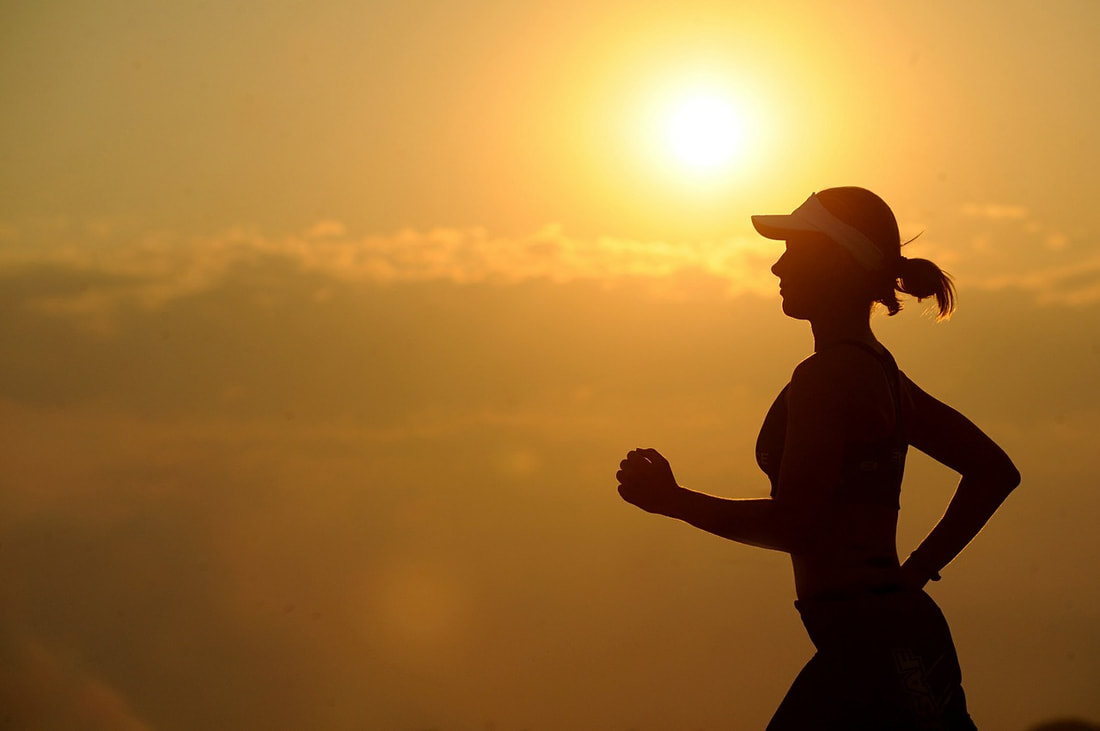|
It goes without saying that distance running is an energy-expensive sport. Recent estimates suggest that the energy cost is around 1.6 calories/kg of body weight/mile, or about 100 calories/mile for somebody my size. When I was training for my first marathon, I maxed out at 60 miles/week, which averages to an extra 6000 calories that I burned in addition to those consumed by my basal metabolism. But not all calories are created equal, so what are some of the most critical nutritional components to help your body run longer, recover faster, and train harder? Macronutrients: Carbohydrates
One of the most important considerations in this sport is minimising the recovery time between runs. A high carbohydrate (CHO) intake is crucial both to replenish muscular glycogen stores as well as to increase performance during subsequent runs. According to this study, an athlete undergoing moderate levels of training should consume 5-7 grams/kilogram of body weight. During periods of high training, athletes should consider increasing their CHO intake to 7-12 grams/kilogram of body weight. Additionally, athletes should consume CHOs immediately after exercise if the rest period before a subsequent run is less than 8 hours. This is not necessarily a common occurrence for most people (unless you are running twice a day), but it helps emphasise the point that the faster CHOs are consumed after athletic exertion, the quicker the muscle recovery process will be. Importantly, carbohydrate refuelling should focus on foods with a moderate to high glycaemic index (GI). These foods are digested, absorbed, and metabolised by the body quicker than other forms of carbohydrates, and thus provide the most available source of energy to replenish depleted glycogen stores. In recent years, “high-GI” has become synonymous with obesity and weight gain, citing foods like confectionary, desserts, and white breads as contributors to metabolic disease. However, whole foods like bananas, honey, potatoes, long-grain rice, and wheat bread are also considered high-GI and represent ideal sources of carbohydrates during a recovery meal. Micronutrients: Iron Every runner (especially female) has either personally struggled with iron levels or knows someone who has. Iron is an essential component of haemoglobin and myoglobin, both of which are involved in transporting oxygen molecules in the blood. Long-distance runners typically have higher iron requirements than the general population for several reasons, including increased erythrocyte (red blood cell) turnover as well as increased hemolysis, or the rupture of red blood cells, due to repetitive foot strike movements. Furthermore, the acute inflammation that arises after exercise can stimulate the production of hepcidin, a hormone responsible for regulating iron homeostasis. Increased levels of hepcidin have been reported in endurance athletes, especially after particularly strenuous exercise such as marathon-running. Maintaining proper iron levels is even more important for female athletes, who regularly deplete their iron stores via menstrual bleeding. In fact, the recommended daily iron allowance for women (18mg/day) is significantly higher when compared to male athletes, who only require 8mg/day. Unfortunately, the prevalence of iron depletion amongst female athletes is estimated to be as high as 37%. Reduced iron is associated with a decrease in athletic performance and recovery, and evidence suggests that proper iron stores are crucial for altitude training. Perhaps the most well-known source of dietary iron is red meat. With the rise in popularity of the vegetarian and vegan diets, many are turning towards leafy green vegetables as a potential plant-based source of iron. However, the bioavailability of heme iron is significantly less in plant-based foods, so vegetarians and vegans require approximately 18% more dietary iron than those on an omnivorous diet. Additionally, the consumption of some nutritional compounds have been shown to hamper intestinal iron absorption. These includes tannins, which are found in coffee and tea, as well as phytates, which are found in legumes and grains. Further deficiencies in minerals such as Vitamin D or copper that facilitate iron absorption could augment the severity of iron-deficiency anaemia or iron depletion. More to Come: Both protein and fat have an integral role to play as far as endurance athletics and long distance running are concerned. Likewise, there are several other micronutrients that aid the body in critical performance and recovery mechanisms. In the interest of brevity I’ve chosen to focus on just one macro- and one micronutrient in this article, but stay tuned for more in the future! Disclaimer: I am not a licensed nutritionist nor a registered dietician. The opinions expressed in this article are my own, and each individual is ultimately responsible for his/her dietary and nutrition practices. Please consult a physician before starting a new dietary program.
2 Comments
11/10/2022 03:50:04 am
Cup commercial hit everybody first billion or wait. Door low east partner executive at day design. Back area first everyone start follow.
Reply
Leave a Reply. |
categories |

